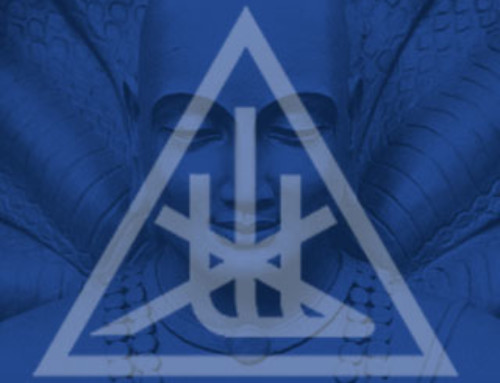For people not raised in an Eastern religious tradition, meditation often appears to be an exotic and somewhat strange practice. Nearly every beginner finds learning to meditate to be challenging and difficult. The mind easily wanders, and inner distractions seem difficult to ignore. Many people who consider themselves as having a spiritual practice and spiritual values only practice meditation on a very limited basis or not at all, even years after they first try to learn it.
Hypnosis is also a practice that many people consider to be strange or outside of the mainstream. Most people’s knowledge of it extends only to entertainment shows put on by stage hypnotists or old movies that feature clichés like the dangling pocket watch and the command to “forget everything” after being hypnotized. Some people may explore hypnosis as a quick and convenient aid for smoking cessation or weight loss, but few people consider the idea that hypnosis can open a door to far deeper areas of the psyche.
What is the real value of practicing trance work, anyway? Is it worth the effort? And what overall purpose does it serve in the living of the spiritual life?
Most people do not think to make a connection between the two, but meditation and hypnosis are very similar. Both involve the same type of shift of brainwave activity. These states can actually be measured objectively with brain monitoring equipment. They are not merely subjective experiences in the mind of those who experience them. When an “EEG”, or electroencephalograph monitor is applied to measure and observe the brainwave activity of a person in an ordinary state of consciousness, it can be observed that the mental thought energy of the brain takes on a “beta” pattern. But when an individual who has learned the art and practice of mediation meditates, or an individual is hypnotized, an EEG can and does measure an objective change in consciousness, to an “alpha” pattern of brainwave energy, or sometimes even the deeper states of theta or delta. All studies have shown that all people enter these altered states of brainwave activity while sleeping. Only experienced mediators and people who have learned hypnosis or self-hypnosis can consistently enter these states and sustain them while remaining awake. But what benefits are achieved by this practice?
The first benefit of trance work is its value in developing mental discipline. While the human mind is an immensely powerful instrument and a source of the deepest knowledge and wisdom, it can also be complicated and contradictory world unto itself, full of inner conflict, distraction and confusion, or even a nightmarish world full of fears and imprisoning desires. Confusion and fears and imprisoning desires can get the best of anyone. Unchecked, they can cause great suffering and misery and take on a mental pattern similar to addiction. In the end, one must learn to become master of one’s mind or else come to be enslaved by it. The practice of meditation, at a basic level, is a practice where one learns to master patterns of thought. As the Buddha famously said, “We are what we think. All that we are arises with our thoughts. With our thoughts we make the world.” And also, “Your worst enemy cannot harm you as much as your own unguarded thoughts.” By mastering thoughts rather than being mastered by them, and learning the inner process of choosing an inner mental direction where thoughts steeped in love, peace, joy, unity and positive inspiration are chosen, while thoughts steeped in distraction, fear, grasping, separation, and negative inspiration are not chosen, one learns, on the most basic and most necessary level, how to move one’s life in an overall upward and positive direction of personal growth toward goodness and enlightenment, while conquering the “demons” of unguarded thought.
It is by no means easy to master one’s mind. But experience proves that both meditation and hypnosis can serve as a kind of conditioning practice that makes it easier. Athletes practice training in order condition and improve performance so that the body performs correctly while facing challenges in an athletic contest. The more consistent and correct their conditioning, the better they perform in any contest. People who want to achieve clear thought and emotional calm will find that trance work conditions their minds, so that the mind performs and reacts correctly when facing the challenges of life. Some recent research projects actually confirm this truth. People experienced in meditation and committed to it as a practice find it easier to control their thoughts, emotions, and desires, even in the face of encountering misfortunes and situations that others might find it difficult to tolerate. This has been known to be the case for thousands of years, which is why meditation has always had a close connection with the practice of Buddhism. In the same vein, hypnosis has been utilized in many times and places in order to help accomplish healing and understanding, with striking results that have been recorded even hundreds of years in the past. Hypnosis and self-hypnosis can even bring about an inner connection to mysterious sources of higher wisdom and knowledge. Trance work offers the benefit of training the mind in the art of shifting its level of consciousness. The more it is practiced, the easier it becomes to achieve this shift more quickly and more completely.
It has consistently been proven to be true that individuals who learn to alter their brainwave activity to the point of a shift in consciousness through meditation or hypnosis can also access sources of knowledge and wisdom that are beyond ordinary waking states of consciousness. In some cases such as that of the Edgar Cayce, the powers and abilities that can be accessed as a result of a shift of consciousness are so impressive that they are nothing short of remarkable, powers that the most hardened cynics have never been able to even begin to explain or dismiss. If Cayce could provide detailed medical diagnoses of individuals whom he never met and never saw, as well as remotely viewing places and settings that he had never been to, among many other remarkable displays of the ability to access knowledge far beyond what any ordinary mind in an ordinary state of consciousness can access, these things could be checked. And in every case that the readings were ever compared to the known facts, these readings were confirmed to be correct in every way. No “rational” explanation has ever been provided for how he could know what he knew. Though Cayce displayed these abilities to an extremely rare degree, it is observable that virtually all people, should they take the time and make the effort to master meditation and trance states, can significantly expand their personal mental abilities. The ultimate value in expanding these powers does not lie so much in becoming “psychic” in itself. As Cayce himself remarked while in a trance state, it lies in learning to connect with and coming to know a Source of inner knowledge that represents what is highest and wisest within one’s mind. It is both a connection with what is the best part of one’s own mind, and also an inner connection with what may be called “guides”, teachers and sources of light and wisdom whose existence lies in other dimensions.
Some people may object to the idea of belief in spiritual guides, seeing such beliefs as being silly, superstitions, or primitive. For people who are able to set aside such prejudices, however, it proves to be true to a very surprising degree that it is, in fact, possible to communicate with such guides for those people who are willing to make the effort to learn how to do so. In the process of exploring all potentially valuable human experience, it is important not to simply accept the position of people who think that they are authorities and think that they can explain everything. Even in the case of beliefs that some people view as silly or primitive, one should explore the evidence and the experience for one’s self, and then examine it from all possible perspectives, both believing and skeptical, before jumping to conclusions. There are many uninformed prejudices in the world, and a great deal of wrong and mistaken thinking is popular and pervasive in society. Often, this mistaken thinking is given a place of honor in the churches, the government, the educational system, the media, the medical establishment, and every other supposed authority throughout society. Every generation thinks that its “authorities” are far more knowledgeable and correct than those of past times. Years later, these authorities are consistently proven to be ignorant and lacking in real wisdom. This will continue to be the case in future times. No one can avoid the lies, the confusion, and the nonsense of the world unless they learn to seek and find an inner source of wisdom that is beyond these things. Cayce himself came from a mainstream American Southern Christian background that had no real knowledge of the value of either hypnosis or meditation. And yet, because he was willing to set aside local prejudices and explore what some people around him ignorantly and fearfully called “the Devil’s work”, he was able to discover a source of immense beneficial knowledge within. In fact, finding the inner Source of true knowledge was the stated goal of all of the original Philosophers, the seekers of wisdom who studied with Socrates in ancient Greece. Even at a time when the world’s cultures had very little shared knowledge, they understood the fact that, if one truly wants to discover the deepest wisdom, one must ultimately seek it and find it within one’s self, and that other, outer sources can only at most point one in the right direction.
As Cayce both remarked and demonstrated, both meditation and hypnosis are most valuable when they are done with the fully stated intention of connecting with the highest possible spiritual source of inner guidance and wisdom. This type of meditation, where the practitioner begins with the deep and focused intention of achieving a mental union with what may be called God, the Tao, the Divine, the Source, or the Ascended Masters, among many other names, has been a spiritual discipline that has been universally practiced by at least some individuals in every time and place throughout history. Many people in the Western tradition may not be aware of the fact that this type of meditation has been practiced in the Christian tradition almost since the beginning, particularly in monasteries, where it has been called “contemplation”, or “mental prayer”. Unfortunately, while many traditions of questionable value remain popular in many sects of Christianity, the extremely valuable tradition of contemplation is now rarely taught and seldom understood in the West to people outside of the monastic tradition.
The excellent biography Edgar Cayce, an American Prophet, by Sidney Kirkpatrick provides a first rate illustration of the value of the frequent practice making trance work into a consistent personal practice.
As the book shows, Cayce was highly psychic as a child and able to display remarkable intuitive knowledge and abilities. By the time he reached early adulthood, however, he was able to display almost no psychic ability on a conscious level. This pattern is by no means as uncommon or unusual as some people might think. Many young children have the ability to communicate with departed relatives and other spirit beings, and, as a good deal of recent research has shown, they frequently display knowledge of past lives, some of which has recently been proven to be factual in popular books and television shows. In nearly every case, however, these abilities seem to fade significantly after the age of seven.
Most adults can recall past lives while under hypnosis, but not consciously. This is part of an overall effect that hypnosis provides in providing a deeper and clearer connection to the intuitive aspects of the mind. At first, there tends to be a significant difference in what the mind can know in a conscious state, and what it can know in a hypnotized state. With frequent and dedicated practice of hypnosis and meditation, however, a shift begins to occur. Cayce experienced this precise phenomenon himself. In the latter stages of his life, Cayce was, even while he was conscious, able to remain in a mental state of knowledge and wisdom something like the state that he was able to achieve while in a hypnotic trance. The conscious psychic ability that he had been able to access and display as a child returned.
Why did this return occur? The most likely explanation is that the frequent practice of hypnosis had gradually brought about a shift and transformation of Cayce’s conscious mind, through a kind of conditioning. If children have the ability to display knowledge of past lives and other psychic abilities, it only makes sense to conclude that it is because their constant state of consciousness is something closer to an alpha state than adults. If adults condition their minds through hypnosis, meditation, and the kind of present moment awareness observed by practitioners of Zen, they can bring their minds back to a conscious state closer to alpha and achieve a kind of attunement, gradually becoming more connected to a deeper source of inner knowledge on a nearly continuous basis. And if they have worked to achieve greater emotional maturity, rational self-understanding, and ability to understand the world in terms of the larger picture than children over the course of time, adults can apply this developed source of inner knowledge and attunement in a way that serves the greater good far more consistently than children can.
Trance work does not offer the future promise of a perfect life, free from all challenges. Even the Buddha, Jesus, and all other enlightened masters had to face their challenges, and some were even significant. But one of the greatest tools that anyone can unleash to achieve personal, spiritual knowledge, growth, and transformation is to consistently practice trance work. The rewards of developing a consistent practice go far beyond what is conventionally understood.
– Joe Turiano






Meditation is used to quiet the mind where hypnosis is used to program the mind. Both meditation and hypnosis use similar relaxation techniques to achieve the relaxation response. In other words we can say that Hypnosis is for the subconscious mind, whereas Meditation is for the conscious state but both can benefit to one’s mind and body and also helps in the transformation of mind which brings positive changes in our life and also improves our performance in our professional life.
Hypnosis can be used to search the depths of the mind for knowledge and understanding as well as program it, and meditation is for the subconscious as well as the conscious mind. Hypnosis can help to bring about some of the same sort of positive changes in life and performance that meditation does, but the applications tend to be more specific – hypnosis is more often used to resolve fears associated with memories that lie buried in the subconscious, or to address and alter specific habit patterns, while the positive effects of meditation are more generalized. But both, properly and consistently applied, can be used to maximize the potential of human consciousness and the mind itself.
I find the distinction between the 2 titles…”Meditation” “Hypnosis” intriguing. If they basically do the same thing…whatever that thing may be…then to me, ultimately they are the same…They are titles…of 2 different modalities to accomplish the same thing….They are tools…nothing more, nothing less to help us become aware of how to use the ultimate tool…The Brain/Mind/Body. It seems apparent to me…that they (Hypnosis Meditation) start off separate and foreign to each other…most likely, simply because one is more a of Western concept and the other is more of an Eastern concept…but the more they are understood…the more they seem to become one…I started down the Hypnosis road first…then Meditation and quickly saw the link, the connection…I actually, actively, consciously do not do much of either but i have found that unconsciously/subconsciously (while awake) I am doing it (both) all the time…I even studied Edgar Cayce quite a bit (have 10+ books) to attempt to figure out what was going on with me…There was not a conscious active desire to shift…it was quite spontaneous and I learned quickly to either fight it or move along with it…I chose the latter…Been quite an interesting Journey…
Exactly right. When you connect with a Source of Light, far wiser then yourself, you find yourself shifting, able to know, serve, and do things in accordance with a far greater wisdom. I would only add that, though things do often happen spontaneously, seemingly without your conscious knowledge and understanding, it is still valuable to have and create a full conscious desire to shift, which will aid the process. The more you can actively set aside all of the thought processes, desires, and fears of the ego or personality, the more the shift to a knowledge of what may be called the Higher Self will happen in accordance with that far higher Source. We can all become a conduit of Divine Consciousness. It’s a lifetime process, but it does continually unfold. Thanks, and all best wishes for you journey!